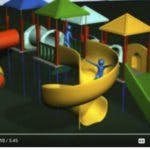Children may experience abdominal pain from a variety of different reasons. Constipation and a backed up digestive system can lead to decreased mobility in the abdomen, and then lead to stiffening of the abdominal tissues. This stiffening leads to further slowing of digestion and can lead to pain. Pain often makes the child guard (or tighten muscles in their abdomen and throughout their body) against the pain, however this often leads to more stiffness and increased pain. This cycle may have occurred very recently, or years ago; but once the abdominal stiffness and pain are present, they rarely go away on their own.
Abdominal pain can also be a product of stress. Some people get tightness in their neck and shoulders with stress, for others it can be their legs. However, with children with abdominal pain, there may be a connection between their stress, and where they carry it. In response to stress (fear, anxiety, uncertainty, and changes their life) children may unknowingly clench their abdominal musculature, and create a pattern of increased abdominal stiffness, possibly slowed digestion, abdominal guarding, and abdominal pain. A pediatric pelvic floor physical therapist has the ability to assess the abdomen to determine if and how much the abdomen is limited in its mobility. If abdominal stiffness is present, the therapist will use manual skills, exercise, as well as breath work, to assist in the abdomen to become more mobile. The therapist will also screen for possible stressor that could be contributing the abdominal stiffness, and appropriately refer the child and family to a practitioner who is an expert in the field of psychological challenges.
Blog Articles



